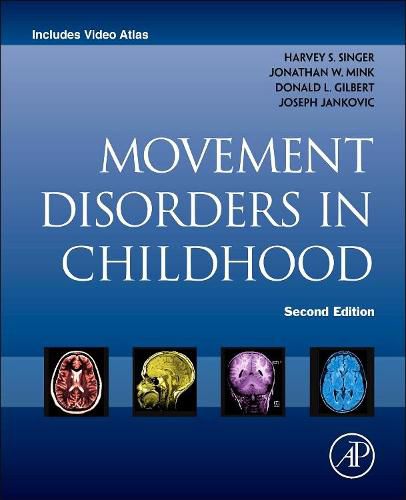Readings Newsletter
Become a Readings Member to make your shopping experience even easier.
Sign in or sign up for free!
You’re not far away from qualifying for FREE standard shipping within Australia
You’ve qualified for FREE standard shipping within Australia
The cart is loading…






Movement Disorders in Childhood, Second Edition, provides the most up-to-date information on the diseases and disorders that affect motor control, an important area of specialization within child neurology.
Over the past several decades, advances in genetics, neuroimaging, neurophysiology, and other areas of neuroscience have provided new understanding of the underlying etiologies and mechanisms of these conditions as well as new opportunities for more accurate diagnosis and effective treatment.
This new edition builds upon the success of the first edition, with comprehensive scientific and clinical updates of all chapters. In addition, there are new chapters on hereditary spastic paraplegia, quantitative motor assessments, autoimmune disorders, and movement disorders in the developmental neuropsychiatric disorders ADHD, OCD, and autism.
Additional materials are provided on the latest in drug treatments, computer based strategies for genetic diagnosis, and helpful videos for phenomenology.
$9.00 standard shipping within Australia
FREE standard shipping within Australia for orders over $100.00
Express & International shipping calculated at checkout
Movement Disorders in Childhood, Second Edition, provides the most up-to-date information on the diseases and disorders that affect motor control, an important area of specialization within child neurology.
Over the past several decades, advances in genetics, neuroimaging, neurophysiology, and other areas of neuroscience have provided new understanding of the underlying etiologies and mechanisms of these conditions as well as new opportunities for more accurate diagnosis and effective treatment.
This new edition builds upon the success of the first edition, with comprehensive scientific and clinical updates of all chapters. In addition, there are new chapters on hereditary spastic paraplegia, quantitative motor assessments, autoimmune disorders, and movement disorders in the developmental neuropsychiatric disorders ADHD, OCD, and autism.
Additional materials are provided on the latest in drug treatments, computer based strategies for genetic diagnosis, and helpful videos for phenomenology.